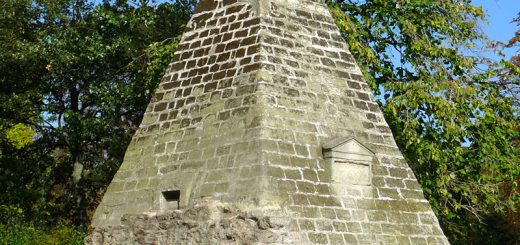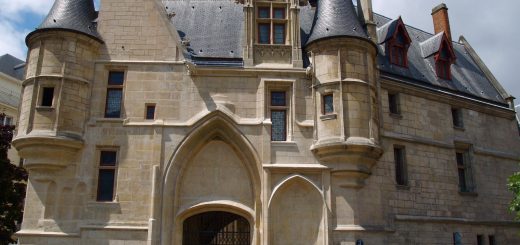Saint-Eugène Sainte-Cécile
4 Rue du Conservatoire, 75009 Paris
Construction : 1854 / 1855
The exterior of this church is quite simple, almost banal, but it is only an envelope of stones. The whole structure of the church is metallic, and is completely visible from inside.
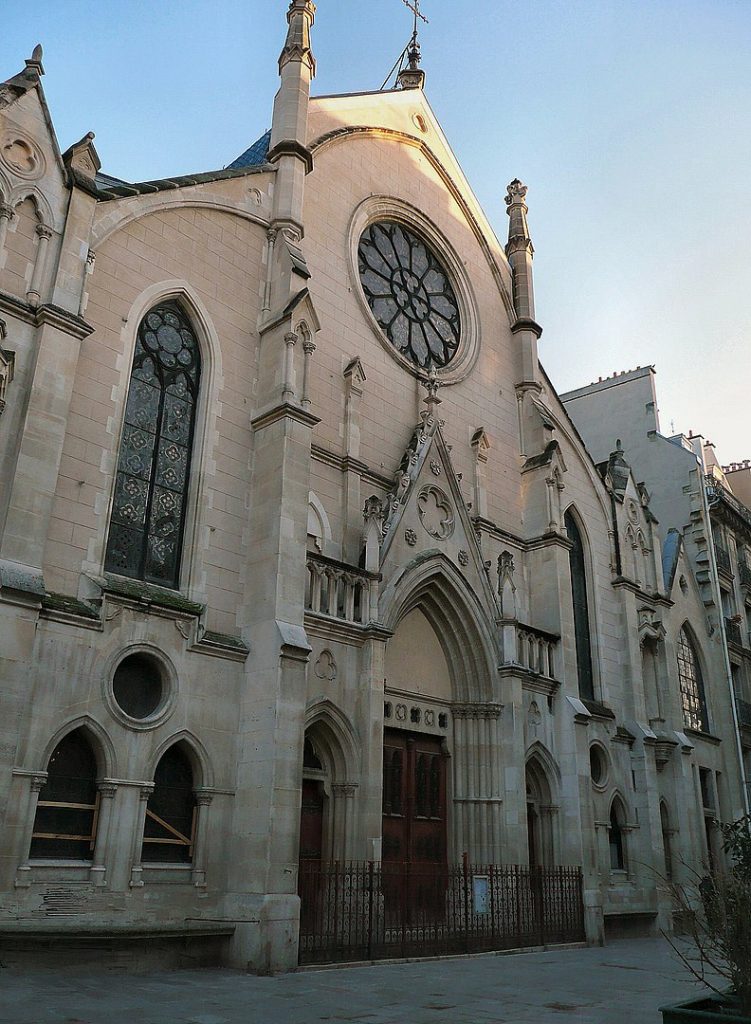
Photo : Oxxo (Wkp) / Licence CC BY-SA 3.0 
Photo : Miguel Discart (Fkr) / Licence CC BY-SA 2.0
Neo-gothic made of iron
The architect Louis-Auguste Boileau had previously worked on the construction of “Le bon marché”, the first department store in Paris, which also had a metal structure. However, this is the first time that this architecture was used for a church.
In order not to confuse the public too much, Boileau perfectly imitated Gothic churches with their pointed arches and pointed vaults. Cast iron arches simply replace stone ribs.
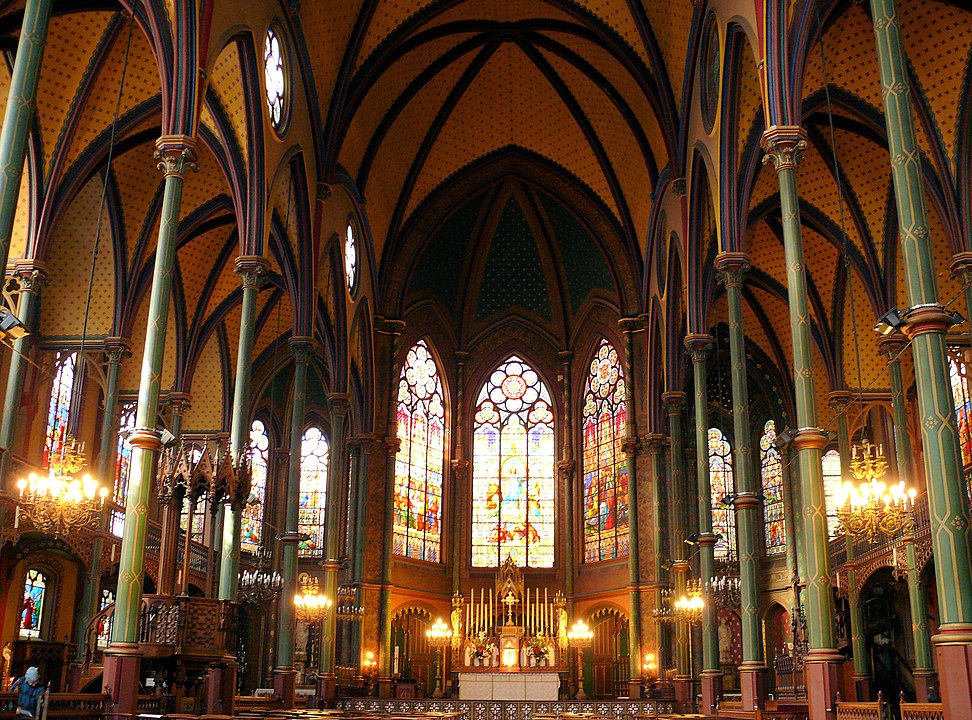
To a certain extent, the metal structure allows going a little further than Gothic stone architecture. For example, the pillars are very thin, which gives a strong impression of slenderness and completely decompartmentalize the space. No matter where you are, you can look around the whole church.
A money concern
This construction was not motivated by a taste for innovation, at least not primarily. The financial question was much more central.
Under the Second Empire (1852-1870), the State authorized and subsidized the construction of churches. But there were hundreds of places of worship to be built or renovated across France, and support was therefore limited. For parishes that do not have a lot of wealthy donors (which is the case here since it was more of a working-class neighborhood), the issue of cost is absolutely central.
The metallic structure allows considerable savings. Besides the fact that the material itself is much cheaper than dressed stone, its lightness eliminates the need for flying buttresses, but also reduces the need for foundations and roofing. Compared to equivalent churches, the cost is roughly divided by four.
In addition, it saved space and reduced the construction time which was only 20 months for this church.
Esthetique
This visible metal structure does not detract from the beauty of the place, quite the contrary. A painted, polychrome decoration skillfully underlines the structure and enhances it.
But above all, the church has remarkable stained-glass windows, which imitate the medieval style with astonishing quality.
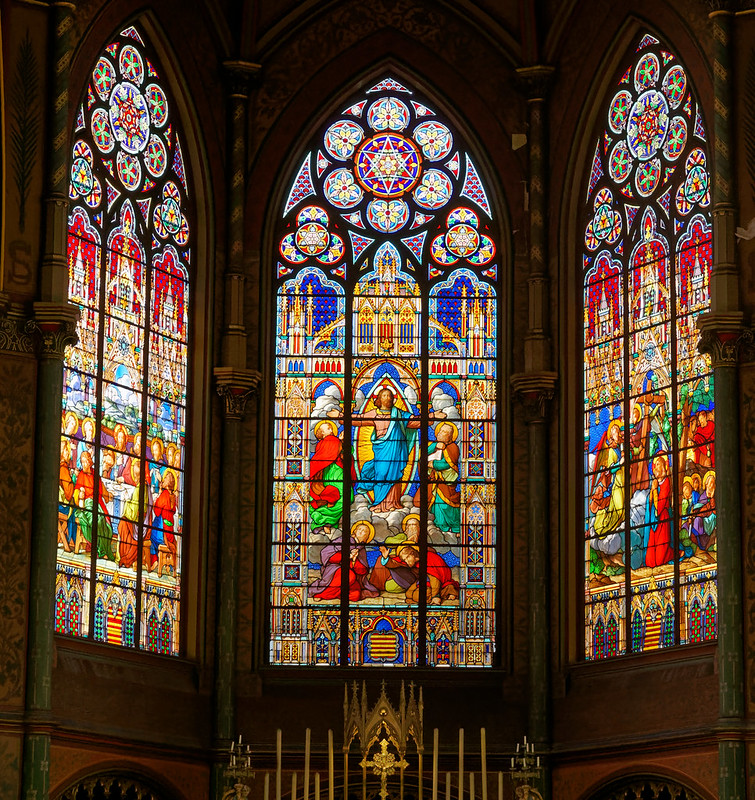
Criticism
This construction was severely criticized. Its opponents argued that Gothic architecture made sense only to meet the challenges of stone construction. In other words: if the Gothic builders had had metal at their disposal, they would not have done Gothic. There was therefore no logic in using Gothic architecture with another material.
But above all, metal has long been rejected because it was not considered a sufficiently noble material for a church. So, although other places of worship later will benefit from a metal structure, it will generally be hidden. The Church of the Sainte Trinité is a good example.
Moreover, the church did not benefit from a full classification as a historical monument until 1983, which shows that this type of architecture took a long time to be recognized.




